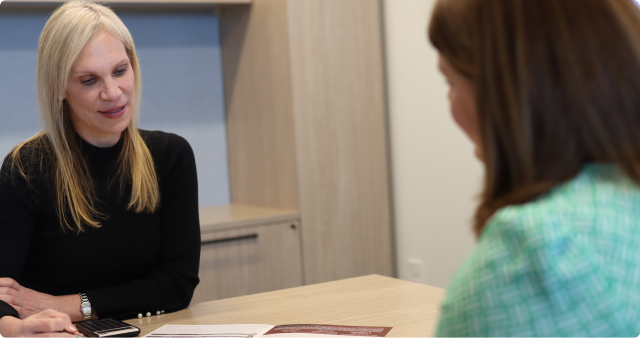A big part of my life’s mission is to help families not only eventually retire, but retire happily. Of course, the challenge is that retiring takes work, a plan and, most importantly, working the plan. Few people just wake up one day with the luxury to walk away from a paycheck while also having vibrant social lives and great health. For most, it requires dedication in their 30s, 40s, 50s and beyond.
Retiring and retiring happily are two different things.
Even the most committed savers give little thought to what actually goes into a happy retirement — and an overwhelming number only emphasize the financial part. They plod along; faithfully saving and trusting that someday retirement will become a reality, without considering how to design a happy next chapter.
A framework for retirement success
These factors of long-term happiness are useful guideposts. Decisions on money, hobbies or social activities — no matter how near or far retirement is — can be made with these categories in mind. These let anyone with a vision to enjoy retirement make intentional choices that will actually move them closer to their dream for happiness.
Let’s explore each:
Money
The data is clear that the happiest retirees achieve certain financial milestones. In research done for my book, “You Can Retire Sooner Than You Think,” I found that the happiest retirees have at least two (and often three) sources of income. These can include Social Security, pension income, income from investments, part-time work or rental properties. The source doesn’t matter nearly as much as the diversity. A few, uncorrelated or unrelated sources are best. As well, happy retirees generally report at least $500,000 in liquid net worth, while the happiest retirees based on our research average just over $800,000.
You don’t necessarily need millions in assets as the pundits on TV suggest. Economists call this “diminishing marginal returns,” suggesting that each incremental dollar past a certain point buys less and less happiness. Tax and estate complexity and complicated family relationships may actually prove life-draining as net worth balloons. At a certain level, more may not always be better!
Next, the average happy retiree spends about $53,000 per year. With a 20 percent effective tax rate, they would target around $70,000 per year in gross income. This is in line with a popular study on emotional well-being and income, which suggests that money and happiness are correlated up until about $75,000 in income. As well, happy retirees tend to follow the conventional withdrawal rule, and take no more than 4 percent of their initial retirement assets (plus inflation) each year to fund their lifestyles. Of course, for some, this varies depending on fixed or variable expenses and supplemental income. But beyond this withdrawal level, the probability of your money lasting “forever” sharply declines.
Finally, one of the biggies: The happiest retirees are four times more likely to be mortgage-free within five years of retirement than unhappy retirees. Their home values average around $300,000 (yes, McMansions, pool guys and acres of manicured lawns can be stress-inducing), and they have no mortgage — or a payoff that’s in sight.
Adventure
What you do in retirement is as important as what you save. Happy retirees are curious and adventuresome. And while “adventure” means different things for everyone, there’s no escaping a few fundamental truths. First, happy retirees take 2.4 vacations versus 1.4 for their unhappy peers. They avoid staycations and get out of their comfort zones, prioritizing thrills and the change of pace and scenery that comes with new experiences.
Second, they’re actively involved in a number of core pursuits. I wrote before about how to use hobbies to get “richer” in retirement, and the truth remains: Happy retirees have 3.6 core pursuits, while unhappy folks have less than two. The most popular one? Volunteering. This tends to fuel a sense of purpose and social connection, two important traits in hobbies that elevate happiness. Other listed pursuits by the happiest people included vigorous exercise, golf, travel and family time. The hobbies of the least happy people? Those that were primarily nonsocial and isolation-inducing like running, hunting and fishing, to name a few.
Social life
Ever heard of the “Roseto Effect”? It’s the phenomenon by which a close-knit community experiences a reduced rate of age-related ailments. It was first documented in 1916 by a doctor that noticed aging individuals in the primarily Italian-American community of Roseto, Pennsylvania, suffered far fewer heart attacks and cardiac issues than those in surrounding communities. What was surprising was how this was entirely at odds with the lifestyle habits of the people. Community members smoked unfiltered stogies, drank red wine by the gallon and routinely gorged on meatballs and sausages fried in lard. But they lived in close, neighborly proximity, had dozens of daily connections and often had multiple families under one roof. This was a blue-collar town with little means that relied on one another. Sure enough, as the population became further “American-ized,” dispersed and grew less reliant on one another, medical trends retreated back to the national averages. Observations of Roseto prove an important point: Cohesive, social connections equal a richer life.
Look at some of the data:
• Thirty-seven percent of unhappy retirees describe where they live as “rural.” This is almost double the national average, whereas happy retirees live in the city or suburbs (i.e., where other people are). Happy retirees that report living “near or close to” at least half of their children and grandchildren are also five times more likely to be happy than those that don’t. As well, more than 75 percent of the happiest bunch are married, whereas divorce is routinely referenced as having a direct and depleting effect on finances and emotional health.
• Another social element of retirement happiness is weekly religious service attendance. Survey data shows that regular church or worship attendees are 1.5 times more likely to be happy in retirement.
• Data from Gallup on personal well-being suggests that the happiest Americans are spending six to seven hours per day socializing — especially with friends and family. For the vast majority, setting up retired life to make it easier for socializing will multiply joy in the retirement season.
Health
As important as money, adventure and staying social are, your physical, emotional and mental health matter, too. Frankly, you can’t be happy in retirement if you don’t have the health to experience it.
Physical activity is a must, as discussed in our review of active core pursuits. Additionally, one study of nonagenarians (those ages 90-99) found that 15 minutes a day of activity adds years to a lifespan. For our younger crowd, the same study extended the research to women of all ages, finding that 15 to 30 minutes of daily activity brought a 20 percent decrease in the risk of dying at a given age versus someone who is sedentary. Being physically capable is not just an end in itself either. It’s an enabler of the other categories, too. Individuals with physical limitations struggle to keep habits of adventure and staying social.
Happy retirees are also curious, creative and ambitious. They keep their mind sharp by learning new things, having intellectual conversations and avoiding the brain-drain of daytime TV. They take care of their bodies, too, as the happiest surveyed retirees routinely avoid fast food. Their reported favorite places to eat out? Olive Garden and Longhorn Steakhouse.
So, start now.
Envision your retirement season and recognize that happiness there is the sum total of the choices you make concerning money, adventure, being social and health today. Of course, keep socking away those nickels, but focus on habit building around the full core-four categories, too. These together are the blueprint for a satisfying retirement.
To read the original AJC article click here.
Related Video
DISCLOSURE
This information is provided to you as a resource for informational purposes only and should not be viewed as investment advice or recommendations. Investing involves risk, including the possible loss of principal. There is no guarantee offered that investment return, yield, or performance will be achieved. There will be periods of performance fluctuations, including periods of negative returns. Past performance is not indicative of future results when considering any investment vehicle. This information is being presented without consideration of the investment objectives, risk tolerance, or financial circumstances of any specific investor and might not be suitable for all investors. This information is not intended to, and should not, form a primary basis for any investment decision that you may make. Always consult your own legal, tax, or investment adviser before making any investment/tax/estate/financial planning considerations or decisions.








